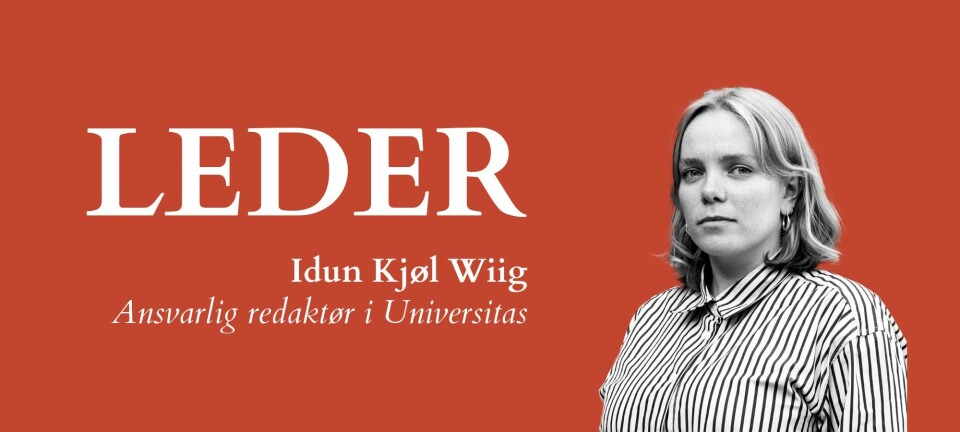Understanding the Election:

A Breakdown of Norway’s New Government
The recent Norwegian elections on the 13th of September were decisive: Arbeiderpartiet, or the Labor Party, won the largest percentage of votes and the prime minister will no longer be Erna Solberg, as she will be replaced by Jonas Gahr Støre.
But for someone who doesn’t live in Norway, the process and terms of government turnover might be confusing. Inter Universitas reporters have answered common questions about the most recent elections to help you understand what path Norwegian democracy chose two weeks ago.
Some Key Terms
Stortinget: “The legislature”; literal translation: “the big thing”
Sperregrense: The minimum percentage a party needs to add more people to the Stortinget. If the party does not meet this threshold, the party will lose people from Stortinget. The minimum percentage of votes to meet the threshold is 4%. Two parties did not meet the threshold in this election: the Christian people’s party and the Miljøpartiet de Grønne [MDG] Green party.
The Parties
Arbeiderpartiet: The Labor Party
Høyre: The “Right” Party; the party that Erna Solberg belongs to
Kristelig Folkeparti (KrF): “People’s Christian Party’
Miljøpartiet de Grønne (MDG): The Green Party
Rødt: The Red Party
Sosialistisk Venstreparti: “The Socialist Left Party”
Venstre: The “Left” Party
How Does It Work?
At the legal age of 18 in Norway, citizens are eligible to vote for one party in the election. A Parliamentary election takes place every four years, meaning the next election will take place in 2025. In Norway the Parliament consists of many parties, and, traditionally, three parties lead governing for the following term. As of today, the governing parties are: Høyre (“Right”), Venstre (“Left”), and KrF (“People’s Christian Party”).
Erna Solberg from Høyre is Norway’s prime minister and she has been in office for a duration of 8 years (two electoral terms). After Erna Solberg, Høyre, and the other parties leave their governing positions, Jonas Gahr Støre, who is from Arbeiderpartiet, will be the new prime minister of Norway. However, which other parties will govern alongside him is yet to be decided: after a disagreement between Senterpartiet and the Sosialistisk Venstreparti (SV), SV will not govern with the other two parties.
Which Parties Will Most Likely Govern in the New Parliament?
Arbeiderpartiets [vision](aa) is; “a fair world with no poverty, where there is peace. A world where people have freedom, where they are equal and have direct influence on their own lives. All humans are unique, irreplaceable, and are worth the same. Each and every one of us should have the opportunity to live good lives, in bigger and smaller communities. We wish to have a society based on freedom, solidarity and equal opportunities for all.”
Senterpartiet is led by Trygve Slagsvold Vedum, and the party believes in decentralization, meaning every town or city needs to have their own hospital, fire station and police station. Furthermore, they want people that earn less, to earn more, and to create a society with equality.
Sosialistisk Venstreparti is led by Audun Lysbakken. SV wants a society with a: “strong communal feeling, small differences, and a combative plan for a fair solution on the climate crisis”. As of 29 October, SV will not be governing alongside AP and SP. It is yet to be known whether or not SP will govern alongside AP, or if AP will need to find new coalition parties.
Who Will Be the New Prime Minister?
Because the Arbeiderpartiet secured the largest percentage of votes, 26.4%, the party’s leaders will select the new prime minister. Leading up to the election, the party’s choice has been Jonas Gahr Støre.
Jonas Gahr Støre is an educated social scientist, and he has previously been the Minister of Foreign Affairs in Norway as well as the Minister of Health and Care Services. Støre believes in a state which will provide people with equal opportunities, no matter what their economic background is. The “welfare state” - a state which gives back to its people - is the key term for this prime minister: “After eight years of increased differences, it is now ordinary peoples’ turn”.
What Does This Mean for Norway the Next Four Years?
We can expect to see less privatization of workplaces and schools, as this will, according to Arbeiderpartiet, divide the people of Norway and create financial insecurity amongst “normal” Norwegians. The three parties want to focus more on Norwegians and create stability within the country.
When Will the New Parliament Go Into Effect?
The new parliament is likely to begin on the 1st of October, but will not be formally opened until the King announces that the new parliament is in effect (set for the 11th of October). The King’s proclamation will be followed on October 13th with a second announcement regarding the state budget for 2022.
How do Norwegians Vote
For Norwegians who physically vote at the voting site, they are led to a private booth where they are presented with several drawers, each labeled with a different party. Norwegians select the ballot for the party they wish to vote for. If the voter agrees with the party’s choice for prime minister, the job is easy: mark that candidate, and only that candidate, on the ballot.
If the voter disagrees, they rank their preferred candidates listed on the ballot. Their vote will still go towards that party, and that party will ultimately decide who will be the prime minister in the event that party wins the most votes. Voters do have the option to leave the ballot blank.
It is very important that voters mark their ballot according to the instructions - mismarked ballots will not be counted.
Election Facts
Every voting area gets a certain percentage of the votes based on how many people live in that area - it is based on the population, not the geographic size of the area (for example, although Finnmark is geographically bigger than Oslo, Oslo has a larger percentage of people and gets a larger percentage of the vote).
The people of Norway have elected 169 representatives from around the country who will govern for the next 4 years.
47% of Stortinget is female.
77.1% of eligible voters voted in this election - this demonstrates practice in democracy.
The Center party got 13.6%, seeing the largest increase in votes since the last election.
































